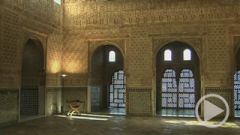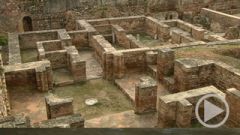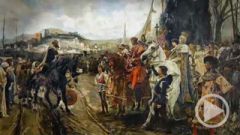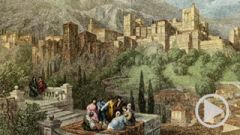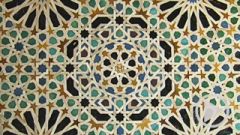Romantic Rediscovery
Romantic Rediscovery: The Alhambra in the 19th Century
Napoleon Bonaparte had been defeated, his troops were in retreat. Nothing should be left over for the enemy, and the French blew up the Alhambra’s fortifications. Things would have been much worse if it hadn’t been for Jose Garcia, a simple soldier. He was able to extinguish a fuse at the last minute. A memorial tablet recalls his heroic actions in the year 1812. Most of the Alhambra was now derelict. People began to utilise the palaces as stables for sheep, workshops or taverns. The fountains became public washing wells. But the delapidation also had its charm: as a romantic ruin, the Alhambra became the stuff of artistic and literary legend.
19th century Romanticists, first and foremost the American writer Washington Irving, resurrected the old stories in their works: sagas about hidden Morisco treasures, languid princesses and noble knights – stories that interlace popular ideas, dream and reality.

This was in keeping with the Zeitgeist, which saw the sentiments of the Middle Ages replacing those of the Enlightenment. The focus was now very much on the soul – beyond the confines of reality. François René de Chateaubriand, Victor Hugo and other famous writers extolled the Alhambra as the object of their desires.
María del Mar Villafranca Jiménez, Director of the Alhambra:
"The Alhambra held great appeal for artists, who came to pursue their craft here: composing, writing poems, creating works of modern art. Even cinema, the seventh art, was produced here. There wasn’t a hotel in the 19th century that couldn’t boast a smoking room in the style of the Alhambra. It was the same in high society. Even theatres were named after it. All in all we’re talking about a phenomenon that made the Alhambra famous throughout the world."
Much of this fame was due to the writer Washington Irving, who published his “Tales of the Alhambra” in 1829. Now great numbers of travellers and scholars wanted to see the ruins with their own eyes. The English architect Owen Jones also visited the Alhambra on the last stop of his Grand Tour. His studies and drawings are some of the most important documents of Islamic architecture. In the late 19th century, a trip to the Alhambra was very fashionable – making it a precursor of contemporary cultural tourism.



